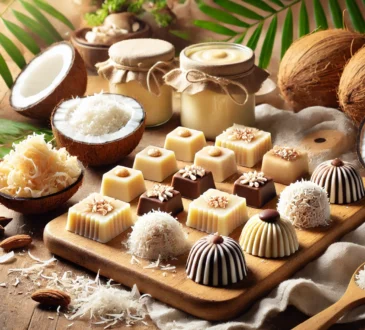
Crafting and Selling Sandalwood Perfume: A Comprehensive Guide
Creating your own sandalwood perfume can be a rewarding and profitable venture. Sandalwood is known for its rich, woody, and long-lasting fragrance, making it a popular choice in the perfume industry. This guide will take you through the process of making sandalwood perfume and provide tips on how to sell it effectively.
Making Sandalwood Perfume
Ingredients and Materials
- Sandalwood Essential Oil: The primary ingredient for the scent.
- Carrier Oil: Such as jojoba oil, sweet almond oil, or fractionated coconut oil.
- Alcohol: High-proof vodka or perfumer’s alcohol.
- Distilled Water: To dilute the perfume.
- Essential Oils: Other complementary essential oils for blending (optional, such as lavender, bergamot, or vanilla).
- Glass Bottles: For mixing and storing the perfume.
- Pipettes and Funnels: For precise measurements and transferring liquids.
- Labels: For branding and product information.

Instructions
- Create the Base Mixture:
- In a clean glass bottle, mix 10-15 drops of sandalwood essential oil with 2 tablespoons of carrier oil. This forms the base note of your perfume.
- Blend Middle and Top Notes (Optional):
- Add 5-10 drops of a complementary essential oil for the middle note (e.g., lavender).
- Add 5-10 drops of a top note essential oil (e.g., bergamot or citrus).
- Add Alcohol:
- Pour 1/2 cup of high-proof vodka or perfumer’s alcohol into the bottle. This helps to preserve the fragrance and allows it to disperse better.
- Mix and Let It Sit:
- Close the bottle tightly and shake it well to mix the ingredients.
- Let the mixture sit in a cool, dark place for at least 48 hours to allow the scents to blend and mature. For a more intense fragrance, you can let it age for up to 6 weeks.
- Dilute with Water:
- After the aging process, add 2 tablespoons of distilled water to the mixture. Shake well to combine.
- Filter and Bottle:
- Using a coffee filter or fine mesh strainer, filter the perfume into a clean glass bottle to remove any sediment or impurities.
- Transfer the filtered perfume into your final perfume bottles using a funnel.
- Label and Store:
- Label your perfume bottles with the name of the scent, ingredients, and your brand name.
- Store the bottles in a cool, dark place to preserve the fragrance.
Selling Sandalwood Perfume
1. Branding
- Create a Unique Brand: Develop a unique brand identity that reflects the essence of your sandalwood perfume. Design a logo, choose a brand name, and create a consistent visual style.
- Packaging: Invest in attractive, high-quality packaging that reflects the luxury and natural appeal of your product.
2. Marketing
- Online Presence: Set up a professional website and online store. Use high-quality images and detailed product descriptions to attract customers.
- Social Media: Use platforms like Instagram, Facebook, and Pinterest to showcase your products, share customer testimonials, and engage with your audience.
- SEO and Content Marketing: Optimize your website for search engines and create content (e.g., blog posts, videos) that highlights the benefits and uniqueness of your sandalwood perfume.
3. Sales Channels
- Online Marketplaces: Sell your perfume on platforms like Etsy, Amazon, and eBay to reach a wider audience.
- Local Markets and Craft Fairs: Participate in local events to sell your products directly to customers and build brand recognition.
- Boutiques and Stores: Partner with local boutiques and specialty stores to carry your perfume.
4. Customer Engagement
- Samples and Promotions: Offer free samples or introductory discounts to attract new customers.
- Loyalty Programs: Create loyalty programs to reward repeat customers and encourage referrals.
- Feedback and Reviews: Encourage customers to leave reviews and feedback to build trust and improve your products.
Conclusion
Crafting your own sandalwood perfume and selling it can be a fulfilling and profitable endeavor. By focusing on quality ingredients, effective branding, and strategic marketing, you can create a successful fragrance business. Remember to stay patient and persistent, as building a loyal customer base takes time and dedication.




